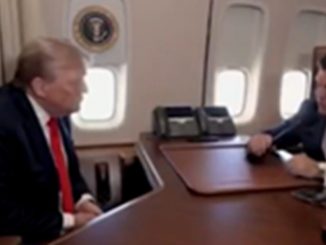
Published September 8, 2025
President Trump announced that the U.S. is in “very deep negotiations” with Hamas to secure the release of Israeli hostages, warning the group that refusal would bring severe consequences. Over the weekend, he issued what he called a “last warning,” urging Hamas to accept a new ceasefire proposal that Israel has already agreed to. The plan reportedly includes Hamas releasing all 48 remaining hostages on the first day of a ceasefire in exchange for thousands of Palestinian prisoners, with further talks to continue during the truce. On September 8, Israeli Foreign Minister Gideon Saar confirmed that Israel accepted Trump’s framework, which ties hostage release to broader terms such as Hamas disarmament. Meanwhile, Israel has escalated military operations—described as a “hurricane” of strikes—designed to pressure Hamas into compliance. Hamas has acknowledged receiving the proposal and is reviewing it, but its final stance remains uncertain. With mounting Israeli public pressure to bring the hostages home and increasing international attention, Trump’s ceasefire initiative has placed Washington at the center of the crisis, though its success depends on Hamas’s willingness to agree.
👥 Public/Political Reactions
-
Israeli Public: Large protests across Israel demand urgent action to bring hostages home, pressuring leaders to accept compromise.
-
Hostage Families: Strongly urge Trump and the Israeli government to prioritize a deal, even if it means major concessions.
-
Israeli Government: Officially accepted Trump’s ceasefire framework but remains cautious, with some leaders warning Hamas could exploit a truce.
-
Trump’s Position: Casts himself as the central mediator, warning Hamas with a “last warning” and framing the deal as proof of U.S. strength.
-
Supporters of Trump: Highlight his leadership and argue that U.S. influence is being restored through decisive diplomacy.
-
Critics of Trump: Warn that concessions to Hamas could embolden terrorism and undermine Israel’s long-term security.
-
Regional Reactions: Some Arab states cautiously welcome the idea of a ceasefire, while others remain wary of the prisoner-release terms.
⚠️ Resulting Effects
-
Hostage Release: Potential freedom of the 48 remaining Israeli hostages, easing public pressure on Israel’s leadership.
-
Temporary Ceasefire: Pause in Israel’s “hurricane” strikes on Gaza, reducing casualties and allowing humanitarian aid to enter.
-
Prisoner Exchange Impact: Release of thousands of Palestinian prisoners could boost Hamas’s standing among Palestinians but raise security concerns in Israel.
-
Political Fallout in Israel: Debates likely to intensify between families of hostages pushing for compromise and leaders wary of empowering Hamas.
-
U.S. Role Strengthened: Successful mediation would highlight Washington’s leverage and bolster Trump’s image as a global dealmaker.
-
Risk of U.S. Credibility Loss: If the deal collapses, it could weaken American influence and complicate future diplomacy.
-
Regional Ripple Effects: Arab states may cautiously push for wider peace talks, though doubts remain about Hamas’s compliance with disarmament.
-
Escalation Risk: Hamas’s refusal could trigger harsher Israeli strikes and prolong the war, hardening positions on both sides.
🔮 Future Outlook
-
Hamas Acceptance: If Hamas agrees, a fragile ceasefire could begin, allowing humanitarian aid, hostage releases, and potential regional talks on Gaza’s future.
-
Hamas Rejection: Refusal would likely trigger harsher Israeli military operations, escalating the conflict and prolonging civilian suffering.
-
Israeli Politics: Pressure from hostage families will continue to shape government decisions, while debates over security risks remain heated.
-
U.S. Credibility: Trump’s role as mediator will either strengthen U.S. influence if successful or weaken it if the deal collapses.
-
Regional Involvement: Arab states may cautiously support wider negotiations, but doubts about Hamas’s commitment to disarmament persist.
-
Long-Term Challenge: Even with a ceasefire, without addressing core issues—security for Israel and political legitimacy for Palestinians—violence could easily resume.
🧩 Bottom Line:
At the heart of this conflict lies a hard truth: Hamas has consistently chosen terror over peace, and Israel cannot be expected to live under the shadow of rockets and hostage-taking. Trump’s ceasefire proposal, already accepted by Israel, offers Hamas a chance to prove whether it is serious about protecting Palestinian lives or simply intent on prolonging bloodshed. For Israel, the deal represents a painful but necessary compromise to save its citizens, while for the U.S. it demonstrates a renewed willingness to lead when others hesitate.
The coming days will show if Hamas values human life enough to release the hostages and lay down arms. If it refuses, Israel will be justified in escalating its campaign until the threat is eliminated. Either way, the Trump administration has reasserted American strength by putting a clear offer on the table and standing firmly with its ally. Peace can only come when Hamas is disarmed and terrorism no longer dictates the future of the region.
SOURCES: ZEROHEDGE – US In ‘Very Deep Negotiations’ With Hamas To End Gaza Conflict, Trump Says
REUTERS – Trump says US in ‘very deep’ negotiations with Hamas, urges release of hostages
AL JAZEERA – Trump says a deal on Gaza could come soon, issues ‘last warning’ to Hamas





Be the first to comment